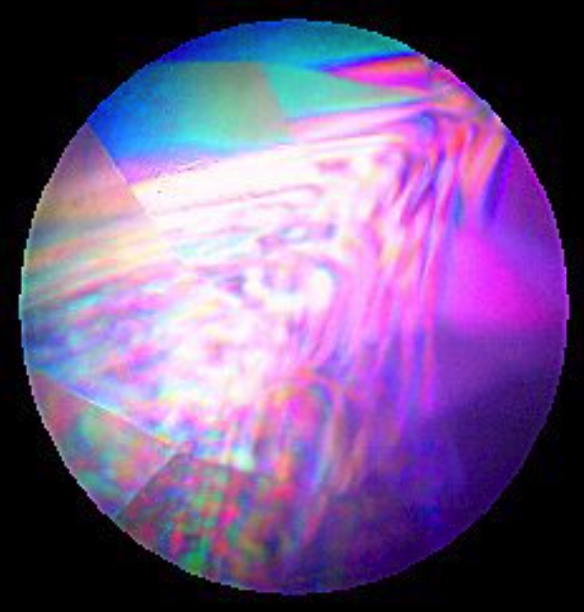Polariscope Guide, Part 3: Testing for Gemstone Twinning, Dichroism, and Crystal Strain
You can use a polariscope to observe gemstone twinning, dichroism, and crystal strain. Test your ability to identify these and other gem properties with a polariscope quiz.
3 Minute Read
Gemstone Twinning
A crystal doesn’t always form in a single step. If one of the required elements for a crystal’s growth is depleted, it will stop growing. When the proper mix of ingredients is present again, growth will resume. Some crystals will continue to grow as a whole, without any division. Others will grow in layers, one on top of the other. If these layers grow in a different direction or orientation, this is known as twinning.
Gemstone twinning is most common in corundum and quartz. It appears in your polariscope as parallel layers of color. Since the layers can be polarized in opposite directions, this can affect your readings.
Corundum with extreme twinning will be light in all directions in the polariscope. This usually indicates an aggregate. Check for double refraction with a dichroscope.
Twinning is absent in most synthetic quartz. Some new synthetics show twinning, but these are rare. If you find twinning in a quartz family gem, it’s probably natural. Its absence proves nothing. There may be no twinning in a natural gem or you may not be able to find it. This is especially common in light-colored gems. Examine the gem immersed …
Donald Clark, CSM IMG
Donald Clark, CSM founded the International Gem Society in 1998. Donald started in the gem and jewelry industry in 1976. He received his formal gemology training from the Gemological Institute of America (GIA) and the American Society of Gemcutters (ASG). The letters “CSM” after his name stood for Certified Supreme Master Gemcutter, a designation of Wykoff’s ASG which has often been referred to as the doctorate of gem cutting. The American Society of Gemcutters only had 54 people reach this level. Along with dozens of articles for leading trade magazines, Donald authored the book “Modern Faceting, the Easy Way.”
Related Articles
Using a Reticle: A Guide for Gemologists
Product Review: No Name Refractometers
Refractometer Guide, Part 1: Refractive Index Testing
How to Build Pocket Crossed Filters for Gemstone Testing
Latest Articles
Quartz Toxicity: Understanding the Risks for Jewelers and Wearers
Synthetic Amethyst: What is it and How is it Made?
Hambergite Value, Price, and Jewelry Information
Pearl Simulants: How to Spot Faux Pearls
Never Stop Learning
When you join the IGS community, you get trusted diamond & gemstone information when you need it.
Get Gemology Insights
Get started with the International Gem Society’s free guide to gemstone identification. Join our weekly newsletter & get a free copy of the Gem ID Checklist!
